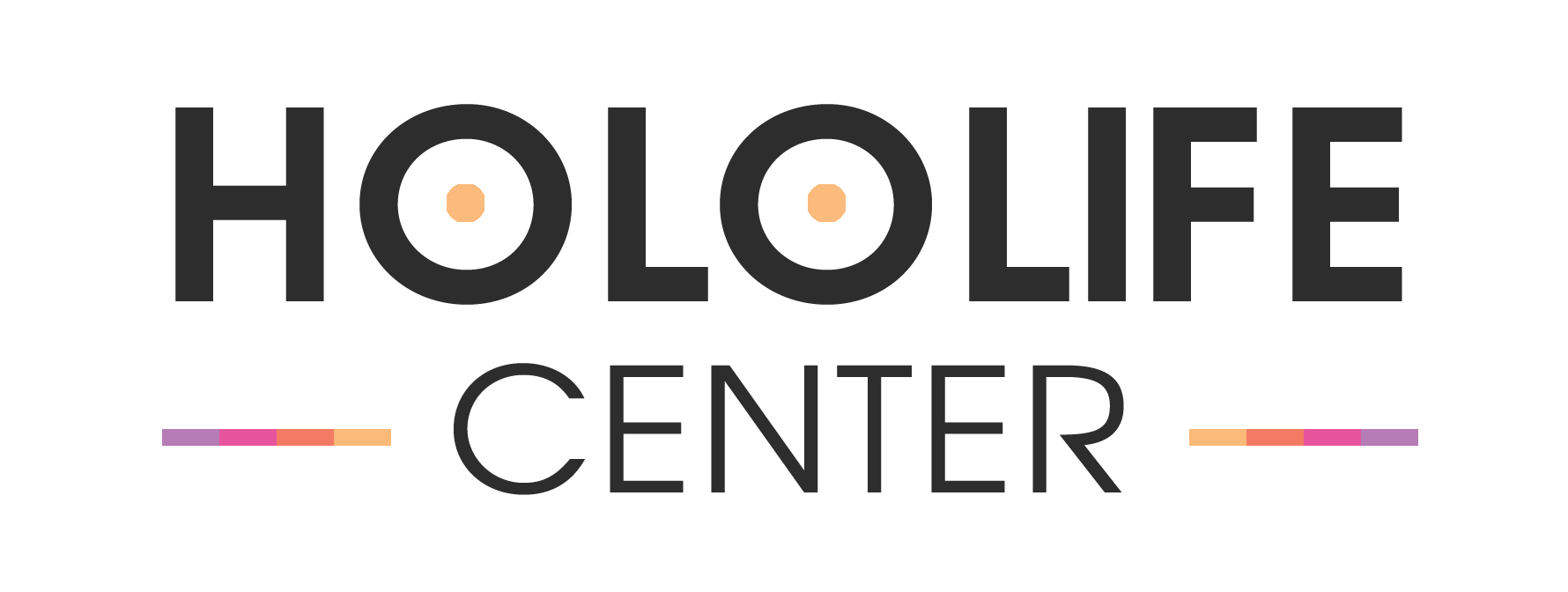
Are you looking to enhance your body's natural healing abilities, recover faster from injuries, and potentially slow aging? The secret may lie in optimizing your stem cells – the remarkable regenerative cells that serve as your body's internal repair system.
This article will explore evidence-based strategies to naturally increase your circulating stem cells, improve their function and maximize their healing potential. You'll discover practical steps to support your body's regenerative capabilities from nutrition and supplements to exercise and lifestyle modifications.
Stem cell optimization isn't just for athletes or those recovering from injuries – it's a powerful approach to overall health that can benefit anyone looking to enhance their vitality, resilience, and longevity. Whether you're dealing with chronic inflammation, recovering from exercise, or want to support healthy aging, understanding how to optimize your stem cell function could be the missing piece in your health journey.
Why Stem Cells Matter for Health Recovery
Stem cells represent a distinct class of undifferentiated cells characterized by two fundamental properties: self-renewal and multilineage differentiation potential. They function as the body's internal repair system, maintaining tissue homeostasis through their ability to replenish specialized cells lost to normal physiological turnover or injury.
Hematopoietic stem cells continuously generate blood components, mesenchymal stem cells contribute to maintaining connective tissues, and tissue-resident stem cells facilitate organ-specific regeneration. The regulatory mechanisms governing stem cell quiescence, activation, and differentiation involve complex interplays between intrinsic genetic programs and extrinsic microenvironmental signals, including Wnt, Notch, and BMP pathways.(1)
Recent advances in single-cell genomics have revealed previously unappreciated heterogeneity within stem cell populations. This suggests functional specialization that may be harnessed for therapeutic applications in regenerative medicine, from tissue engineering to treating degenerative diseases.

Image: Different types of stem cells.
Source: Novusbio.com (2025).
Stem cells play a crucial role in:(2-3)
- Tissue repair of muscles, skin, and organs
- Anti-aging and cellular rejuvenation
- Injury recovery and faster healing
- Brain and nervous system health through neurogenesis
As we age, stem cell activity naturally declines, slowing recovery and increasing susceptibility to chronic conditions. Research shows that optimizing stem cell function through nutrition, lifestyle, and evidence-based interventions can enhance regeneration, improve resilience, and accelerate healing. (4-5)
The Critical Impact of Stem Cell Depletion
When the body lacks sufficient stem cells or they become dysfunctional, several critical issues arise:
1. Impaired Healing & Slow Recovery
Without adequate stem cells, the body struggles to repair damaged tissues. Wounds heal more slowly, and injuries such as fractures and muscle tears take longer. Studies demonstrate that decreased stem cell mobilization correlates with impaired tissue regeneration and prolonged recovery.(6)
2. Accelerated Aging & Cellular Degeneration
Stem cells replace old and damaged cells with new ones. As they decline, cellular waste accumulates, leading to premature aging, wrinkles, organ dysfunction, and muscle loss. Research indicates that stem cell depletion accelerates aging through reduced cellular turnover and increased senescence.(7)
3. Weakened Immune System
Hematopoietic stem cells (HSCs) produce immune cells and white blood cells. Without them, the body becomes more vulnerable to infections, cancer, and autoimmune diseases. Studies show compromised stem cell function correlates with reduced immune surveillance and increased disease susceptibility.(8)
4. Organ Failure & Chronic Diseases
Organs like the liver, heart, and brain rely on stem cells for maintenance and repair. A lack of stem cells can lead to organ dysfunction, including heart disease, liver cirrhosis, and neurodegenerative disorders like Alzheimer's. Research demonstrates that stem cell therapy can improve organ function in various chronic conditions.(9)
5. Increased Cancer Risk
Stem cells help regulate cell growth and prevent mutations. When they fail, uncontrolled cell division becomes more likely, increasing cancer risk. Studies show that dysfunctional stem cell regulation contributes to tumor formation and progression.(10)
What Causes Stem Cell Depletion?
- 🕰️ Aging: Natural decline in stem cell activity(11)
- 🔥 Chronic inflammation & oxidative stress: Damages stem cells and their microenvironment
- 🍔 Poor diet & nutrient deficiencies: Lack of key stem cell-supporting nutrients
- ☣️ Toxins: Smoking, alcohol, and environmental pollution
- 😰 Chronic stress & poor sleep: Disrupts stem cell release and function
Stem Cell Optimization Checklist
By optimizing stem cell function and increasing circulating stem cells, you can enhance recovery, slow down aging, and improve overall well-being. This checklist provides science-backed strategies to increase circulating stem cells, strengthen migration to injury sites, and maximize repair efficiency.(12-13)
1. Nutrition for Stem Cell Support
Eat a Stem Cell-Boosting Diet
|
Food
|
Benefit
|
Scientific Support
|
|---|---|---|
|
Blueberries & Dark Berries
|
Rich in anthocyanins that support stem cell proliferation
|
Research shows anthocyanins activate pathways that enhance stem cell survival and function. (14)
|
|
Cruciferous Vegetables (broccoli, kale)
|
Sulforaphane enhances stem cell activity
|
Studies demonstrate that sulforaphane activates the Nrf2 pathway, protecting stem cells from oxidative damage.(15)
|
|
Omega-3 Fatty Acids (wild-caught salmon, chia seeds)
|
Reduce inflammation, improving stem cell function
|
Research indicates omega-3s decrease inflammatory markers like TNF-α and IL-6 that inhibit stem cell activity.(16)
|
|
Green Tea (EGCG)
|
Enhances stem cell mobilization and survival
|
Studies show EGCG activates AMPK signaling, promoting stem cell proliferation. (17)
|
|
Bone Broth
|
Provides collagen and amino acids that support tissue repair
|
Research demonstrates that glycine and proline from bone broth enhance stem cell differentiation. (18)
|
Superfoods & Plant Extracts
|
Supplement
|
Benefit
|
Research Evidence
|
|---|---|---|
|
Blue-Green Algae (AFA, Spirulina)
|
Shown to increase circulating stem cells
|
Clinical studies demonstrate significant increases in circulating stem cells after consumption. (19)
|
|
Aloe Macroclada
|
Supports stem cell migration and tissue repair
|
Research shows aloe compounds enhance stem cell homing to damaged tissues. (20)
|
|
Adaptogens (Ashwagandha, Rhodiola, Ginseng)
|
Reduce stress-related stem cell depletion
|
Studies indicate that adaptogens normalize stress hormone levels that otherwise suppress stem cell production. (21)
|
2. Evidence-Based Supplements
|
Supplement
|
Mechanism
|
Scientific Evidence
|
|---|---|---|
|
STEMREGEN
|
Contains blue-green algae (AFA) clinically shown to increase circulating stem cells by 25-30%
|
Multiple clinical trials demonstrate significant increases in circulating stem cells after consumption. (22)
|
|
Resveratrol
|
Activates SIRT1 longevity gene linked to stem cell health
|
Research shows resveratrol enhances stem cell survival and function through SIRT1 activation. (23)
|
|
Vitamin D3 & K2
|
Essential for stem cell differentiation and bone repair
|
Studies demonstrate that vitamin D receptors on stem cells regulate their proliferation and differentiation. (24)
|
|
Curcumin (Turmeric)
|
Reduces inflammation, improving stem cell efficiency
|
ClinicaResearchch shows curcumin decreases inflammatory cytokines that impair stem cell function. (25)
|
|
N-Acetyl Cysteine (NAC)
|
Boosts glutathione, protecting stem cells from oxidative damage
|
Studies indicate NAC preserves stem cell function in high-oxidative stress environments .(26)
|
3. Exercise & Movement (27)
|
Activity
|
Benefit
|
Research Support
|
|---|---|---|
|
High-Intensity Interval Training (HIIT)
|
Increases stem cell release from bone marrow
|
Studies show acute HIIT sessions trigger significant increases in circulating stem cells.
|
|
Resistance Training
|
Stimulates muscle stem cell (satellite cell) activation
|
Research demonstrates that resistance exercise activates satellite cells for muscle repair and growth
|
|
Walking & Low-Impact Cardio
|
Improves circulation, aiding stem cell delivery to tissue
|
Studies show moderate exercise enhances blood flow and stem cell mobilization
|
4. Sleep & Recovery (28)
|
Strategy
|
Benefit
|
Scientific Evidence
|
|---|---|---|
|
Prioritize 7-9 Hours of Sleep
|
Growth hormone, crucial for stem cell activity, peaks during deep sleep
|
Research shows that sleep deprivation reduces stem cell proliferation and function.
|
|
Optimize Sleep Hygiene
|
Dark room, cool temperature, no blue light before bed
|
Studies demonstrate that improved sleep quality correlates with enhanced stem cell activity.
|
|
Napping (20-30 Minutes)
|
Supports stem cell recovery, reduces inflammation
|
Research indicates short naps reduce cortisol levels that otherwise suppress stem cell function.
|
5. Advanced Therapies for Stem Cell Activation
|
Therapy
|
Mechanism
|
Research Evidence
|
|---|---|---|
|
Hyperbaric Oxygen Therapy (HBOT)
|
Increases oxygen saturation, stimulating stem cell proliferation
|
Studies show HBOT can boost stem cell release up to 8x and improve injury recovery. (29)
|
|
Pulsed Electromagnetic Field (PEMF) Therapy
|
Enhances cellular energy (ATP), supports stem cell function
|
Research demonstrates PEMF therapy increases stem cell proliferation and differentiation. (30)
|
|
Red Light Therapy (Photobiomodulation)
|
Promotes mitochondrial function critical for stem cell activity
|
Studies show red/near-infrared light enhances stem cell proliferation and survival. (31)
|
6. Reduce Inflammation & Improve Microcirculation
|
Strategy
|
Benefit
|
Scientific Support
|
|---|---|---|
|
Cold Therapy (Cryotherapy, Cold Showers)
|
Boosts stem cell activation
|
Research shows cold exposure increases norepinephrine, which stimulates stem cell mobilization. (32-33)
|
|
Intermittent Fasting (12-16 Hours)
|
Enhances autophagy and stem cell regeneration
|
Studies demonstrate that fasting activates pathways that promote stem cell self-renewal. (34)
|
|
Hydration & Nitric Oxide Boosters (beetroot juice, pomegranate)
|
Improve blood flow for better stem cell delivery
|
Research shows that nitric oxide enhances stem cell mobilization and homing to tissues. (35)
|
7. Avoid Stem Cell Depleters
|
Depleter
|
Mechanism
|
Research Evidence
|
|---|---|---|
|
Chronic Stress
|
Cortisol reduces stem cell production
|
Studies show that chronic elevation of stress hormones impairs stem cell function and proliferation. (36)
|
|
Processed Sugars & Trans Fats
|
Increase inflammation, impairing stem cell function
|
Research demonstrates that high-sugar diets create inflammatory environments hostile to stem cells. (37)
|
|
Alcohol & Smoking
|
Damage stem cells and reduce their effectiveness
|
Studies show that both substances directly damage stem cell DNA and impair their regenerative capacity. (38-39)
|
Maximizing Stem Cell Repair: Key Mechanisms of Action
1. Stem Cell Mobilization
Stem cell mobilization involves the controlled release of stem cells from their bone marrow niche into peripheral circulation, making them available for tissue repair throughout the body. (40)
AFA blue-green algae and Aloe extracts help release stem cells from bone marrow into circulation. These natural compounds interact with cell receptors that control stem cell movement.
🔬 Research shows AFA extract can increase circulating stem cells by 25-30% within an hour by affecting the CXCR4/SDF-1 pathway that usually keeps stem cells anchored in bone marrow. The L-selectin ligand in AFA temporarily disrupts this anchoring system, allowing more stem cells to enter the bloodstream where they can travel to areas needing repair. (41)
2. Enhanced Migration
Enhanced stem cell migration represents a critical factor in successful tissue regeneration, as stem cells must navigate from circulation to damaged tissues to exert their therapeutic effects. Research demonstrates that specific botanical compounds modulate the expression of chemokine receptors (particularly CXCR4) and adhesion molecules that guide stem cells to injury sites .(42)
Adaptogens like ashwagandha and Rhodiola have been shown to reduce inflammatory cytokines (TNF-α, IL-6) that would otherwise create a hostile microenvironment while simultaneously promoting the secretion of matrix-remodeling enzymes that facilitate stem cell movement through tissue barriers. This optimization of the inflammatory milieu creates migration-permissive channels while maintaining tissue integrity. (43)
3. Microcirculation Boost
BetterMicrocirculation ensures stem cells can reach their targets and receive the oxygen and nutrients they need to survive and function properly once they arrive. (44) Compounds like ginsenosides from ginseng improve small blood vessel function, creating better highways for stem cell delivery.
🫀 Mechanisms:(45)
- Increase nitric oxide production, widening small blood vessels
- Reduce blood thickness for smoother flow
- Support the formation of new capillaries in damaged areas
When these three mechanisms work together, they create a comprehensive system that mobilizes stem cells, guides them to where they're needed, and ensures they have the supportive environment required for effective tissue repair.
Synergistic Strategy for Maximum Repair
- 🔄 Combine stem cell mobilizers (AFA, Aloe) with circulation enhancers (Ginkgo biloba, Beetroot extract) for faster healing via increased oxygen/nutrient delivery
- 🛡️ Pair with anti-inflammatory supplements (Curcumin, Omega-3s) to create an optimal environment for stem cell repair
- 🌿 Add adaptogens before intense training/stress to protect stem cells from oxidative damage
STEMREGEN utilizes the body's innate regenerative capacity through its clinically validated blend of blue-green algae (AFA) and other bioactive compounds, such as Stemberry® and Fucus vesiculosus (a special aloe species). It has been shown to increase circulating stem cells by 25-30%, enhance their migration to damaged tissues, and amplify the body's natural repair mechanisms for improved longevity, recovery, and overall vitality.

Conclusion
The emerging field of endogenous stem cell optimization represents a fundamental shift in our approach to health and longevity. Unlike conventional medical paradigms that focus primarily on disease management, stem cell science illuminates the body's innate capacity for self-renewal, offering remarkable opportunities for prevention and restoration at the cellular level.
Molecular Research has revealed that stem cell function exists on a continuum, responsive to environmental signals and metabolic conditions. The interventions outlined in this article operate through distinct yet complementary mechanisms: mobilization of dormant stem cell populations, enhanced migration to damaged tissues, and optimization of the regenerative microenvironment. When implemented systematically, these strategies create a biological synergy that exceeds the impact of isolated approaches.
Particularly significant is the bidirectional relationship between stem cell biology and metabolic health. Mitochondrial function, redox balance, and inflammatory status directly modulate stem cell behavior. In contrast, stem cell activity reciprocally influences these same parameters, creating feedback loops that can either accelerate decline or promote regeneration depending on lifestyle factors. The nutritional and behavioral interventions described here—from polyphenol-rich foods to strategic exercise patterns—provide accessible entry points into this regenerative paradigm without requiring invasive procedures.
Disclaimer: This article provides educational information and is not intended to replace medical advice. Consult with healthcare professionals before starting any new supplement or treatment regimen.
Scientific References:
- Mendelson, A., & Frenette, P. S. (2014). Hematopoietic stem cell niche maintenance during homeostasis and regeneration. Nature medicine, 20(8), 833-846.
- Brunet, A., Goodell, M. A., & Rando, T. A. (2023). Ageing and rejuvenation of tissue stem cells and their niches. Nature reviews Molecular cell biology, 24(1), 45-62.
- Drago, D., Cossetti, C., Iraci, N., Gaude, E., Musco, G., Bachi, A., & Pluchino, S. (2013). The stem cell secretome and its role in brain repair. Biochimie, 95(12), 2271-2285.
- Xia, H., Li, X., Gao, W., Fu, X., Fang, R. H., Zhang, L., & Zhang, K. (2018). Tissue repair and regeneration with endogenous stem cells. Nature Reviews Materials, 3(7), 174-193.
- Ren, R., Ocampo, A., Liu, G. H., & Belmonte, J. C. I. (2017). Regulation of stem cell aging by metabolism and epigenetics. Cell metabolism, 26(3), 460-474.
- Thurairajah, K., Broadhead, M. L., & Balogh, Z. J. (2017). Trauma and stem cells: biology and potential therapeutic implications. International Journal of Molecular Sciences, 18(3), 577.
- Ahmed, A. S. I., Sheng, M. H., Wasnik, S., Baylink, D. J., & Lau, K. H. W. (2017). Effect of aging on stem cells. World journal of experimental medicine, 7(1), 1.
- Porada, C. D., Atala, A. J., & Almeida-Porada, G. (2016). The hematopoietic system in the context of regenerative medicine. Methods, 99, 44-61.
- Ebrahimi, A., Ahmadi, H., Ghasrodashti, Z. P., Tanideh, N., Shahriarirad, R., Erfani, A., ... & Ashkani-Esfahani, S. (2021). Therapeutic effects of stem cells in different body systems, a novel method that is yet to gain trust: A comprehensive review. Bosnian journal of basic medical sciences, 21(6), 672.
- Derks, L. L., & van Boxtel, R. (2023). Stem cell mutations, associated cancer risk, and consequences for regenerative medicine. Cell Stem Cell, 30(11), 1421-1433.
- Oh, J., Lee, Y. D., & Wagers, A. J. (2014). Stem cell aging: mechanisms, regulators and therapeutic opportunities. Nature medicine, 20(8), 870-880.
- Oh, J. & Lee, Y., & Wagers, A. (2014). Stem cell aging: Mechanisms, regulators and therapeutic opportunities. Nature Medicine 20 (8): 870–880.
- Ullah, M. & Sun, Z. (2018). Stem cells and anti-aging genes: Double-edged sword—do the same job of life extension. Stem Cell Research & Therapy 9 (1): 1–7.
- Mao, W., Huang, G., Chen, H., Xu, L., Qin, S., & Li, A. (2021). Research progress of the role of anthocyanins on bone regeneration. Frontiers in Pharmacology, 12, 773660.
- Coutinho, L. D. L., Junior, T. C. T., & Rangel, M. C. (2023). Sulforaphane: An emergent anti-cancer stem cell agent. Frontiers in Oncology, 13, 1089115.
- Kavyani, Z., Musazadeh, V., Fathi, S., Faghfouri, A. H., Dehghan, P., & Sarmadi, B. (2022). Efficacy of the omega-3 fatty acids supplementation on inflammatory biomarkers: An umbrella meta-analysis. International immunopharmacology, 111, 109104.
- Capasso, L., De Masi, L., Sirignano, C., Maresca, V., Basile, A., Nebbioso, A., ... & Bontempo, P. (2025). Epigallocatechin Gallate (EGCG): Pharmacological Properties, Biological Activities and Therapeutic Potential. Molecules, 30(3), 654.
- Liu, J., Qin, X., Pan, D., Zhang, B., & Jin, F. (2019). Amino Acid‐Mediated Metabolism: A New Power to Influence Properties of Stem Cells. Stem Cells International, 2019(1), 6919463.
- Merino, J. J., Cabaña-Muñoz, M. E., & Pelaz, M. J. (2020). The Bluegreen Algae (AFA) Consumption over 48 h Increases the Total Number of Peripheral CD34+ Cells in Healthy Patients: Effect of Short-Term and Long-Term Nutritional Supplementation (Curcumin/AFA) on CD34+ Levels (Blood). Journal of Personalized Medicine, 10(2), 49.
- Yu, L., McGarry, S., Cruickshank, D., & Jensen, G. S. (2023). Rapid increase in immune surveillance and expression of NKT and γδT cell activation markers after consuming a nutraceutical supplement containing Aloe vera gel, extracts of Poria cocos and rosemary. A randomized placebo-controlled cross-over trial. PLoS One, 18(9), e0291254.
- Bhikha, R., & Glynn, J. (2018). The pharmacological action of common herbal remedies. American Journal of Internal Medicine, 6(5), 99-107.
- https://www.stemregen.co/blogs/white-papers
- Liu, B., Ghosh, S., Yang, X., Zheng, H., Liu, X., Wang, Z., ... & Zhou, Z. (2012). Resveratrol rescues SIRT1-dependent adult stem cell decline and alleviates progeroid features in laminopathy-based progeria. Cell metabolism, 16(6), 738-750.
- Borojević, A., Jauković, A., Kukolj, T., Mojsilović, S., Obradović, H., Trivanović, D., ... & Bugarski, D. (2022). Vitamin D3 stimulates proliferation capacity, expression of pluripotency markers, and osteogenesis of human bone marrow mesenchymal stromal/stem cells, partly through SIRT1 signaling. Biomolecules, 12(2), 323.
- Sharifi, S., Zununi Vahed, S., Ahmadian, E., Maleki Dizaj, S., Abedi, A., Hosseiniyan Khatibi, S. M., & Samiei, M. (2019). Stem cell therapy: curcumin does the trick. Phytotherapy Research, 33(11), 2927-2937.
- Berniakovich, I., Laricchia-Robbio, L., & Izpisua Belmonte, J. C. (2012). N-acetylcysteine protects induced pluripotent stem cells from in vitro stress: impact on differentiation outcome. International Journal of Developmental Biology, 56(9), 729.
- Chen, J., Zhou, R., Feng, Y., & Cheng, L. (2022). Molecular mechanisms of exercise contributing to tissue regeneration. Signal Transduction and Targeted Therapy, 7(1), 383.
- Moradi, S., Nouri, M., Moradi, M. T., Khodarahmi, R., Zarrabi, M., & Khazaie, H. (2025). The mutual impacts of stem cells and sleep: opportunities for improved stem cell therapy. Stem Cell Research & Therapy, 16(1), 157.
- Thom, S. R., Bhopale, V. M., Velazquez, O. C., Goldstein, L. J., Thom, L. H., & Buerk, D. G. (2006). Stem cell mobilization by hyperbaric oxygen. American Journal of Physiology-Heart and Circulatory Physiology.
- Hu, H., Yang, W., Zeng, Q., Chen, W., Zhu, Y., Liu, W., ... & Zhang, Y. (2020). Promising application of Pulsed Electromagnetic Fields (PEMFs) in musculoskeletal disorders. Biomedicine & Pharmacotherapy, 131, 110767.
- Rastogi, M., Sahu, K., & Majumder, S. K. (2025). Light assisted modulation of stem cell function and secretome production: a systematic review on current status and new avenues for regenerative medicine. Lasers in Medical Science, 40(1), 1-17.
- Jiang, Q., Ding, S., Wu, J., Liu, X., & Wu, Z. (2014). Norepinephrine stimulates mobilization of endothelial progenitor cells after limb ischemia. PloS one, 9(7), e101774.
- Louis, J., Theurot, D., Filliard, J. R., Volondat, M., Dugué, B., & Dupuy, O. (2020). The use of whole-body cryotherapy: time-and dose-response investigation on circulating blood catecholamines and heart rate variability. European Journal of Applied Physiology, 120, 1733-1743.
- Mihaylova, M. M., Cheng, C. W., Cao, A. Q., Tripathi, S., Mana, M. D., Bauer-Rowe, K. E., ... & Yilmaz, Ö. H. (2018). Fasting activates fatty acid oxidation to enhance intestinal stem cell function during homeostasis and aging. Cell stem cell, 22(5), 769-778.
- Caballano-Infantes, E., Cahuana, G. M., Bedoya, F. J., Salguero-Aranda, C., & Tejedo, J. R. (2022). The role of nitric oxide in stem cell biology. Antioxidants, 11(3), 497.
- Bornstein, S. R., Steenblock, C., Chrousos, G. P., Schally, A. V., Beuschlein, F., Kline, G., ... & Andoniadou, C. L. (2019). Stress-inducible-stem cells: a new view on endocrine, metabolic and mental disease?. Molecular psychiatry, 24(1), 2-9.
- Huang, W. H., Kajal, K., Wibowo, R. H., Amartuvshin, O., Kao, S. H., Rastegari, E., ... & Hsu, H. J. (2024). Excess dietary sugar impairs Drosophila adult stem cells via elevated reactive oxygen species-induced JNK signaling. Development, 151(1).
- Di Rocco, G., Baldari, S., Pani, G., & Toietta, G. (2019). Stem cells under the influence of alcohol: effects of ethanol consumption on stem/progenitor cells. Cellular and Molecular Life Sciences, 76(2), 231-244.
- Karam, M., Aqel, S., Haider, M. Z., Fathima, A., Charafedine, A., Daher, M. A., ... & Saliba, J. (2025). Beyond the Injury: How Does Smoking Impair Stem Cell-Mediated Repair Mechanisms? A Dual Review of Smoking-Induced Stem Cell Damage and Stem Cell-Based Therapeutic Applications. Stem Cell Reviews and Reports, 1-20.
- Lapidot, T., Dar, A., & Kollet, O. (2005). How do stem cells find their way home?. Blood, 106(6), 1901-1910.
- Jensen, G. S., Hart, A. N., Zaske, L. A., Drapeau, C., Gupta, N., Schaeffer, D. J., & Cruickshank, J. A. (2007). Mobilization of human CD34+ CD133+ and CD34+ CD133− stem cells in vivo by consumption of an extract from Aphanizomenon flos-aquae—related to modulation of CXCR4 expression by an L-selectin ligand?. Cardiovascular Revascularization Medicine, 8(3), 189-202.
- Marquez-Curtis, L. A., & Janowska-Wieczorek, A. (2013). Enhancing the migration ability of mesenchymal stromal cells by targeting the SDF‐1/CXCR4 axis. BioMeResearchch international, 2013(1), 561098.
- Wróbel-Biedrawa, D., & Podolak, I. (2024). Anti-neuroinflammatory effects of adaptogens: A mini-review. Molecules, 29(4), 866.
- Li, Z. (2024). The Role of Blood Vessels in Delivering Nutrients and Oxygen to the Stem Cells. Stem Cell Research and Regenerative Medicine 7 (1): 155–156.
- Lu, J. M., Yao, Q., & Chen, C. (2009). Ginseng compounds: an update on their molecular mechanisms and medical applications. Current vascular pharmacology, 7(3), 293-302.



